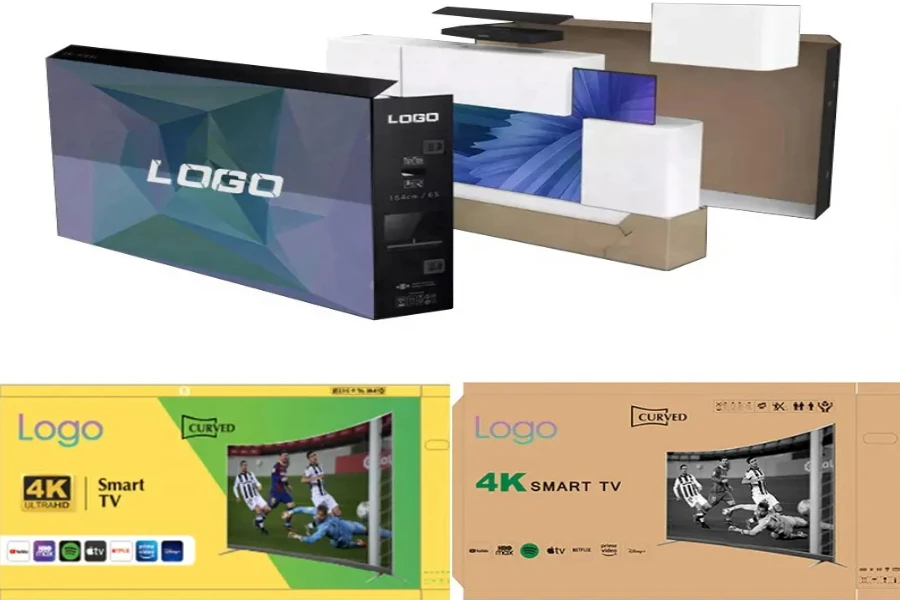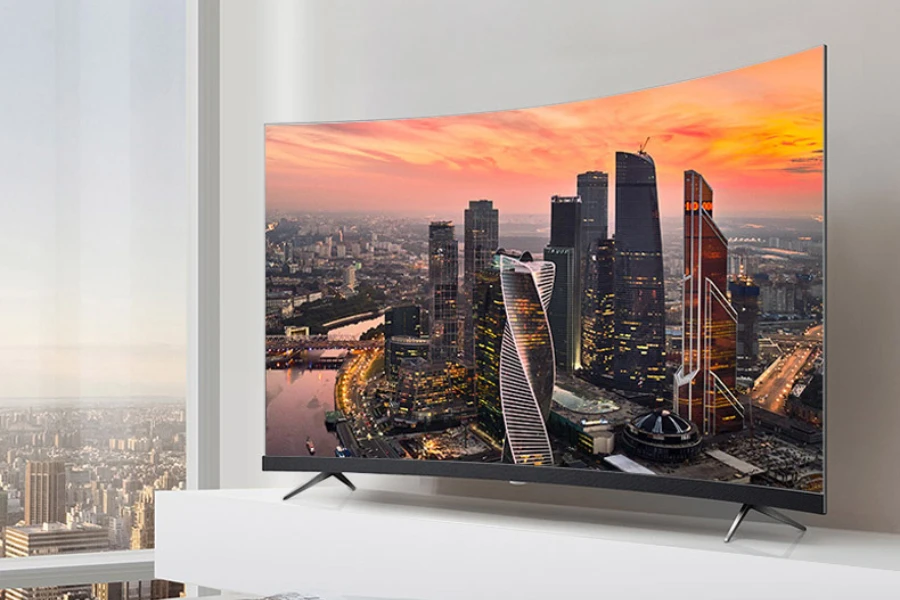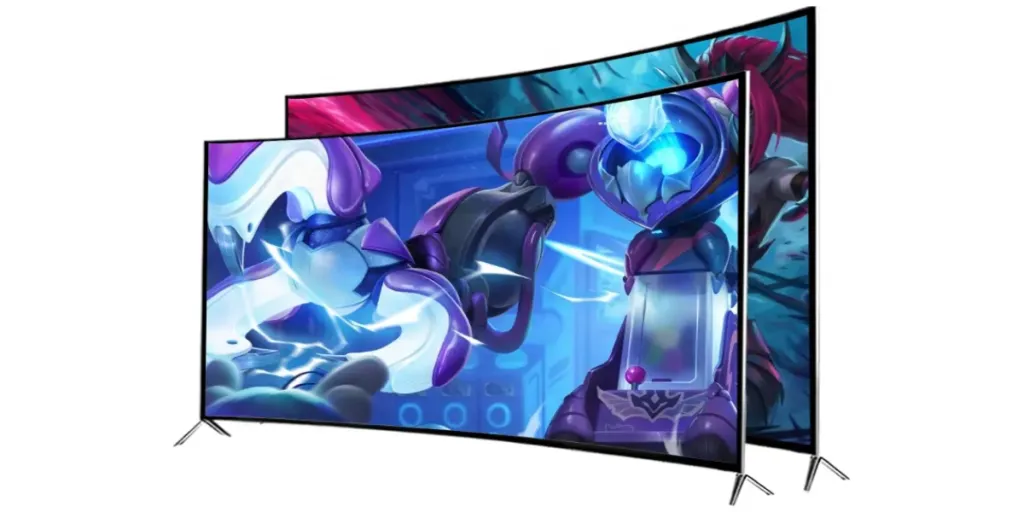Imagine that you are trying to revamp your living room to infuse more ultra-modern or even futuristic elements into your space. Adding a brand new, smart TV with a curved screen is one of the best ways to achieve this goal.
Indeed, that’s at least one of the main reasons people appreciate curved TVs—they look more modernized than their flat-screen counterparts. Nonetheless, another common perception of them is also the typical reason that most people shy away from them in the first place, which is that they carry a much higher price tag.
The truth is, with more and more advanced technology and constant innovative efforts by various manufacturers, not only are curved TVs today no longer as costly as before, but there are also a wide range of choices available in the market.
Read on to find out key tips for selecting great curved smart TVs, and a list of affordable options including those with more high-end features.
Table of Contents
Are curved TVs selling well globally?
Top tips for selecting curved smart TVs
Trendy budget curved smart TV for 2024
An engaging dimension
Are curved TVs selling well globally?
The worldwide curved TV market appears to have a promising outlook with some aggressive compound annual growth rates (CAGR). The global market size of curved TVs in 2022 was estimated to be between US$ 8.6 billion and US$ 11.75 billion. The figure is expected to rise to US$ 20.39 billion by 2029 and further climb to US$ 32.61 billion by 2032 with an impressive CAGR of 15.9%.
In contrast to the global smart TV market, where the Asia Pacific region retains a dominant stake, most reports designated North America as the leader in the curved TV market, commanding a remarkable 40.5% of the worldwide market share.
The burgeoning popularity of online gaming, combined with an increase in disposable income that encourages a greater pursuit of more sleek and modern designs of TVs, as well as the steady expansion of the entertainment industry that pushes for immersive viewing needs, all serve as the catalysts fueling the heightened demand for curved TVs.
In view of these optimistic projections for the global curved TV market, let’s review the critical criteria for selecting the right products and discover some trendy curved TV models available now.
Top tips for selecting curved smart TVs
Any wholesalers who are interested in or already involved in the smart TV business can further enhance their product range and offers by leveraging the cinematic viewing experience offered by curved TVs.
Typically, in order to achieve theater-like enjoyment, the viewers may simply go for a higher resolution screen with vivid color reproduction and superior audio functions featuring Dolby Audio technology. However, by surrounding the viewer’s peripheral vision with the images, curved TVs manage to take their curvature a step further as they are specifically designed to mimic Image Maximum (IMAX) theaters to offer a more engaging experience.
That is to say, curved TVs paired with large screens, which are typically between 60-inch and 79-inch in size nowadays, and a minimum 4K Ultra High Definition (UHD) resolution or even a higher 8K resolution that ensures a sharper and more detailed image, are highly likely to deliver the fully immersive feeling.
These combinations should be able to capture viewers’ attention and make them feel like they’re right “inside” the content they’re watching, thereby elevating engagement and sensory experience. As shown in the picture below, it is also worth noting that the 65-inch TV size is nowadays well-regarded as the most preferred TV screen size that is suitable for most living rooms or average room sizes now.
The displays of curved TVs can be further improved depending on the display technologies such as LED, OLED, etc., that impact how those resolution pixels are illuminated. LED (light-emitting diode) TVs have been around for quite some time, while both OLED (organic light-emitting diodes) and QLED (quantum dot LED) displays have been championed by LG and Samsung respectively since 2012 and 2015 for better image quality and energy efficiencies. Meanwhile, even though there are constant debates about the superiority between OLED and QLED, QLED is generally well-recognized as less likely to experience burn-in issues and come with lower costs compared to OLED.
Size, picture quality, and the overall engaging viewing experience aside, wholesalers should also pay close attention to the extra features of curved TVs, the logistics of shipping these goods as well as their costs. On top of some standard must-have smart TV features such as WiFi connectivity, voice control capabilities, and screen mirroring, smart curved TVs should also be equipped with gaming mode or optimized for gaming activities in view of the worldwide soaring interest in video gaming.
At the same time, it’s crucial for wholesalers to take into account the shape complexity of curved TVs when it comes to packaging for them, customized and extra packaging is inevitable including internal cushioning and extra layers. Such packaging is also closely tied to costs, as these logistical considerations can significantly increase the overall product costs.
Trendy budget curved smart TV for 2024
The upper mid-range
Curved TVs are generally pricier than flat-screen TVs, and even though this is a commonly acknowledged fact, many may not be aware of the reasons behind it. In fact, owing to their specialized nature, curved televisions are normally marketed as high-end items and therefore, they are often equipped with more sophisticated features such as full smart TV functionalities and superior enhanced audio quality.
The production of curved TVs is fundamentally different from flat TVs in view of their unique curvature nature; this means that a variety of customized components are required to accommodate the specific curvy shape, particularly for areas around the edges, which are susceptible to logistics and durability issues.
In view of these factors, the upper range of smart curved TVs actually refers to those models with larger displays. These large-screen curved smart TVs often charge higher prices because they not only incorporate more premium features but also involve more production challenges associated with their unique designs.
That is also why wholesale offers for 55-inch to 65-inch smart curved TVs are often priced around the middle of the three-digit price range but anything larger sees a steep price increase. The impact of screen size on the pricing of a smart TV is particularly obvious for extra-large models. For instance, a 105-inch smart curved TV may feature a much higher price tag compared to the standard 100-inch curved TV model.
In the meantime, as featured in the picture above, the combination of large size and ultra-slim design in curved TVs frequently contributes to a heftier price tag as well. Ultra-thin curved TVs stand out as the leading-edge products in the collection since not only are they more space-saving, but their designs also enhance their aesthetic appeal on top of a more pragmatic function: a potentially improved viewing experience with minimized distractions.
Finally, let’s not forget the increasingly essential gaming feature in smart TVs. A large-size curved TV that supports an HDMI 2.1 port, which is best for the latest up-to-date gaming consoles such as the Xbox Series X and PlayStation 5 as well as compatibility with up to 8K display is certainly in the position to command a higher-selling price too.
The mid-range
Mid-range smart curved TVs available today usually cost several hundred to over a thousand less than those in the upper-middle range category, and most of them come in sizes ranging from 70 to 85 inches.
For example, this 85-inch curved smart TV supports WiFi connectivity, 4K resolution, and high dynamic range (HDR) technology, which used to be a rather premium add-on but is gradually becoming a standard feature now, even for mid-range models. Basically, in the context of consumer televisions, 4K with HDR is essentially the same as UHD HDR, it amplifies the color range, contrast, and brightness of the image, thereby revealing thorough details in both dark and bright areas, bringing out a more dynamic and realistic picture.
Other curved smart TVs with similar sizes, such as this 75-inch 4K curved TV, set themselves apart from other mid-level equivalents through their smart TV features, which allow both flexible mobile app control and a display casting feature.

On the other hand, as shown in the image above, original design manufacturers (ODMs) usually exercise more flexibility in product features, packaging, and branding. For example, a 4K 75-inch curved smart TV manufacturer that supports a range of operating systems (OS) like Android OS, Google OS, and Web OS is likely to cater to the varying demands of sellers across different target markets.
In the same vein, this smart curved TV is also well-positioned to meet the diverse needs of wholesalers by providing extensive customization options, including different remote control styles and customized logos to tailored packaging and a range of interface options.
The budget range

In contrast to their higher-end peers, smart curved TVs with affordable prices are relatively economical, with prices dipping below $200 for wholesale offers. They may have screen sizes up to 65 inches and offer basic smart features, yet still equipped with a 4K display.
It’s relevant to observe that, however, some budget curved TVs are still capable of offering extra functions despite a much lower price point. This particular smart curved TV which costs under US$ 250 per set, for instance, is furnished with HDR, Dolby Atmos, and DTS Audio technologies that provide high-fidelity audio.
Another aspect that should not be overlooked in the field of budget TVs is that due to factors like competitive market demands and the positive reception of a business model centered on customization, many manufacturers are ready to be more adaptable in offering highly tailored solutions. It’s not uncommon to find a 65-inch curved smart TV that allows comprehensive customization, ranging from voice control features to logo placement as well as packaging solutions that cover both kraft paper and carton options.
Even for the smart curved TVs that feature much smaller screen sizes, such as 32-inch to 55-inch curved smart TVs, there are ODMs that support both logo and accessories customizations. Remarkably, these extensive tailor-made features, even in branding and packaging, do not necessarily mean a much-inflated cost, some fully customizable 55-inch smart curved TVs can be priced under US$ 200 when ordered in bulk.
An engaging dimension
The global market for curved TVs is flourishing, and it is predicted to grow at a double-digit CAGR by the year 2032. With such a rapid expansion, both consumers and wholesalers face a variety of great selections and complexities, from size and resolution to display technology, smart features, costings, shipping, and packaging arrangement. While the options may seem overwhelming, the selection of ideal curved TVs mostly depends on the product levels and target market that the wholesalers are looking for.
Through the distinctive quality of the right smart curved TV, wholesalers can create an engaging dimension transforming consumers’ media consumption experience, and potentially leading to higher revenues and profits. For more in-depth information, industry insights, and business updates, unlock a world full of wholesale business knowledge here with Alibaba Reads today.




